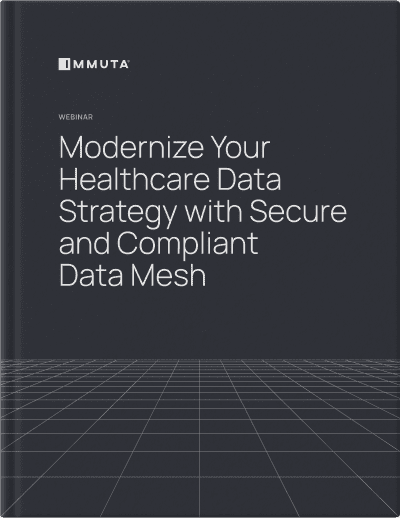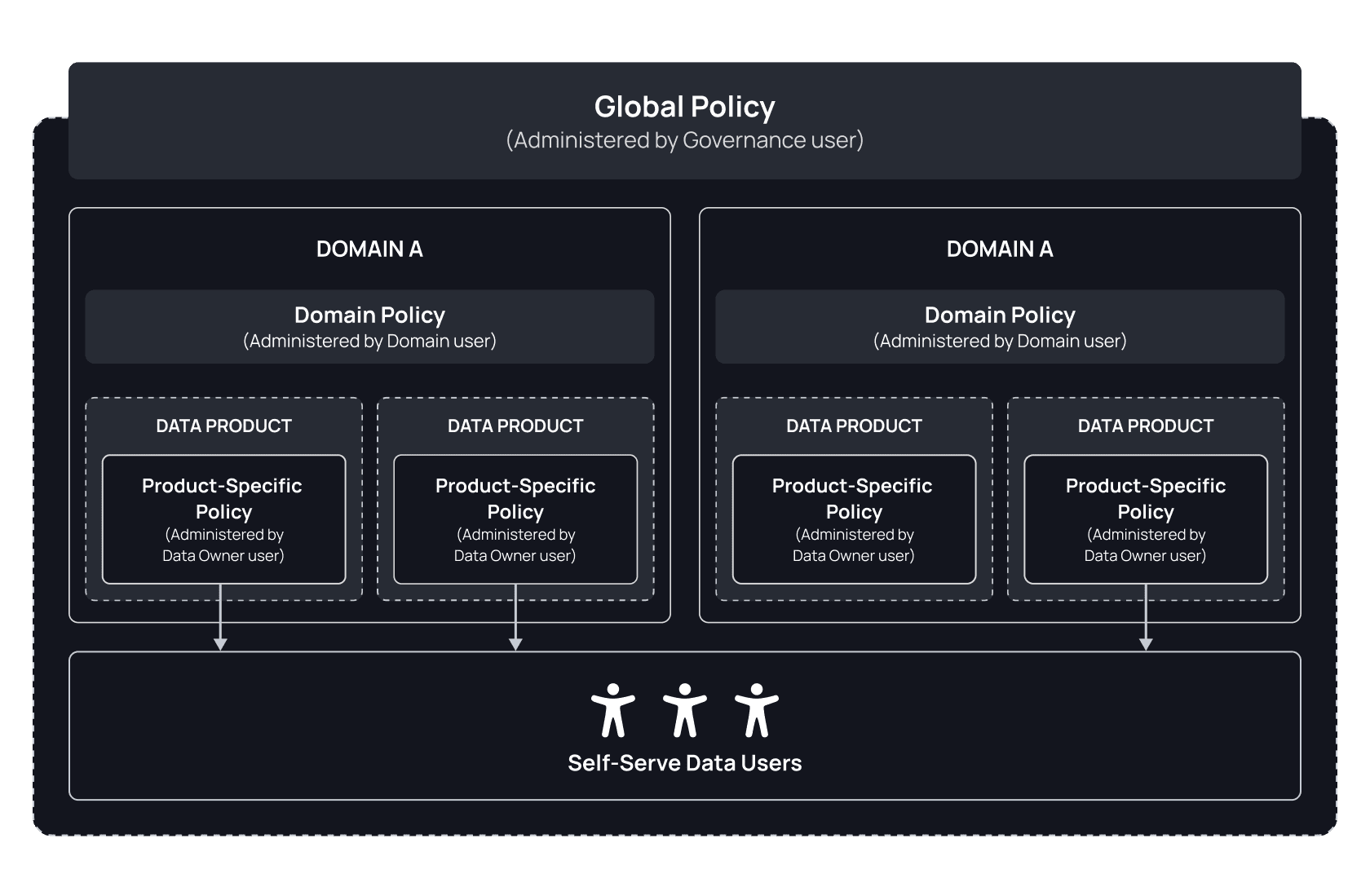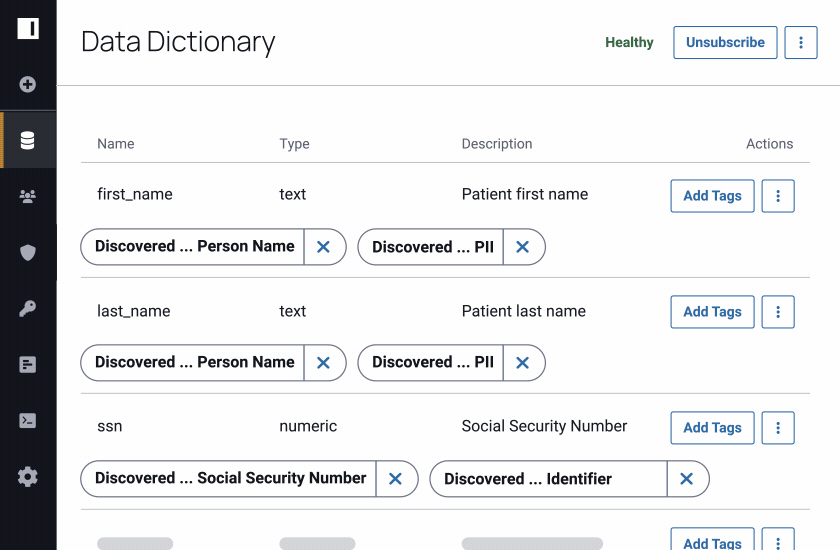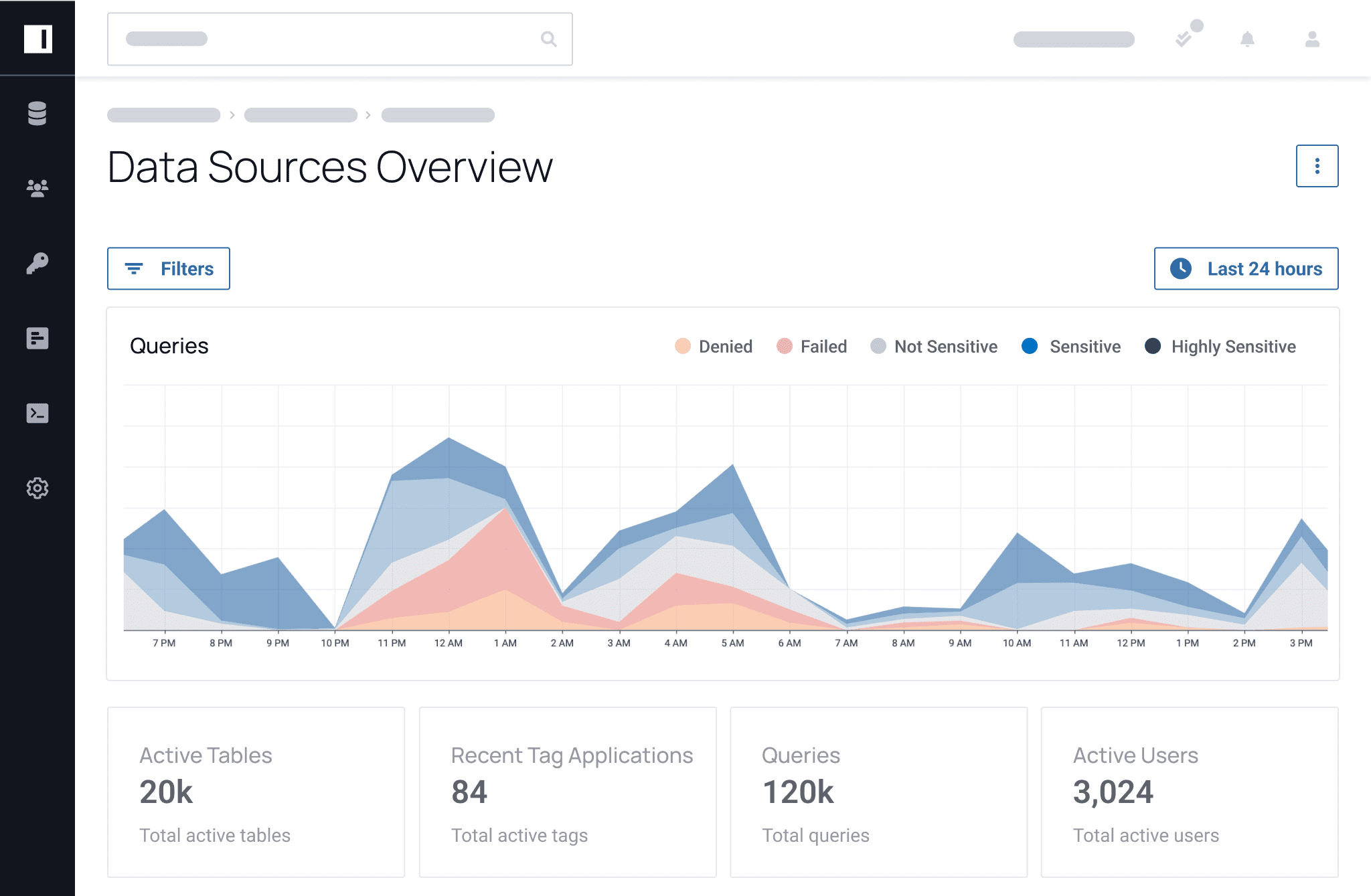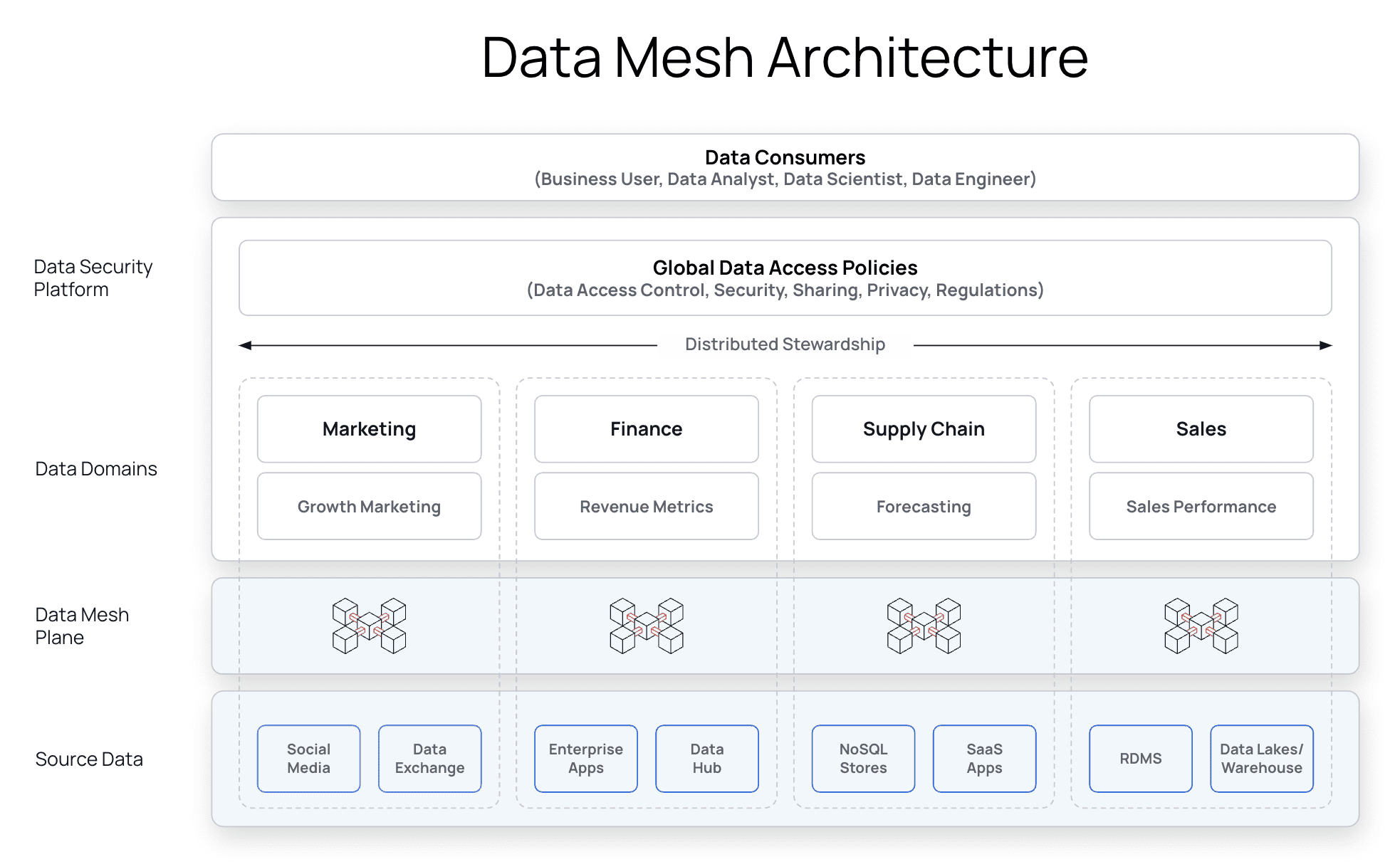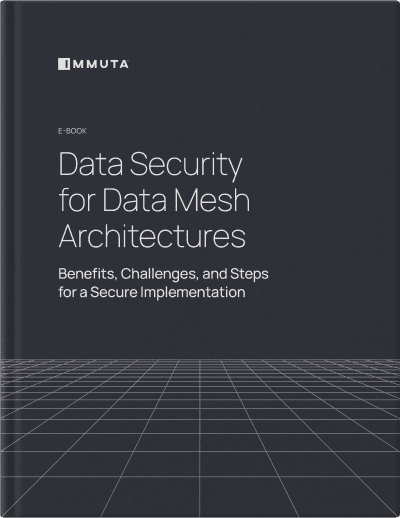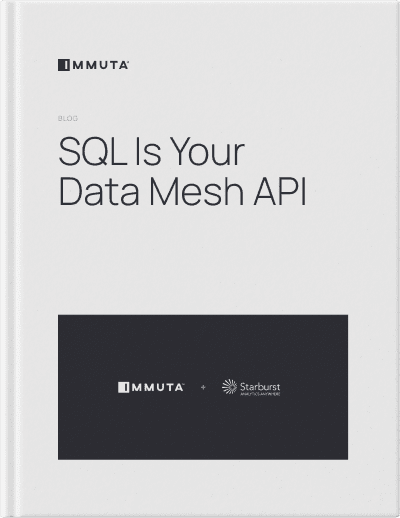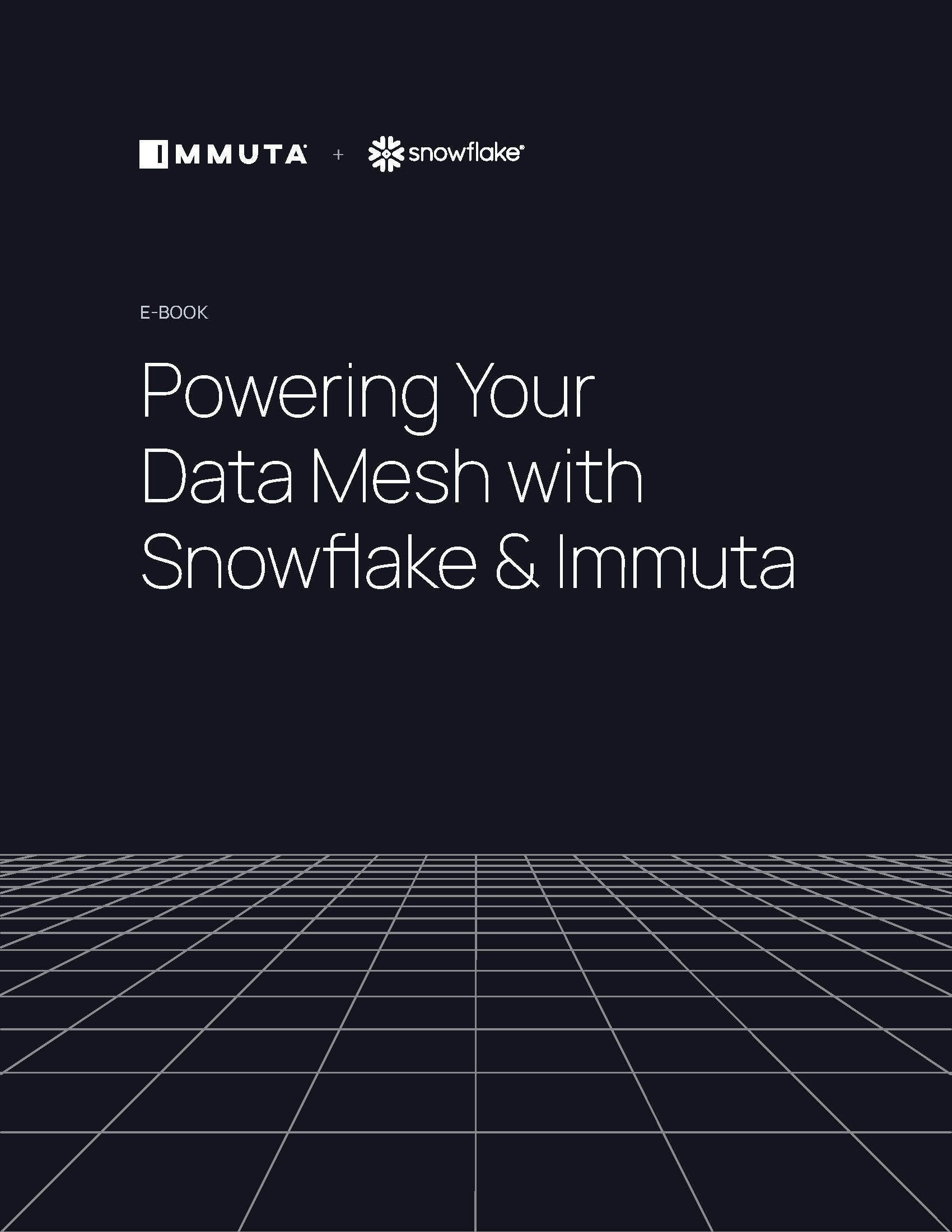“With Immuta, we can give our data product team tools to govern their own policies and access control. It allows them to do it a little quicker, a little more efficiently, and they understand their own data.”
What is Data Mesh?
Data mesh is an architectural approach to managing data within distributed organizations. In contrast to the “data monolith” where a single team is responsible for enterprise-wide data management, data mesh has a decentralized and domain-oriented data architecture. This gives each business domain ownership of its data to create context-aware data products, govern their data, increase self-service, and improve collaboration.
Read this blog to learn more about the four key pillars of data mesh.
The Data Mesh Security Challenge
With dozens of data owners and hundreds of data products, data governance is the hardest part of managing, scaling, and deploying a data mesh. Distributed environments require guardrails within domains and global governance. This is why organizations need Federated Data Governance – a key pillar of data mesh.
Federated Data Governance upholds standards for security, privacy, and compliance without reverting to inefficient, centralized data management controls. In other words, some controls are distributed (aka “federated”) but domains still share governance responsibilities.
